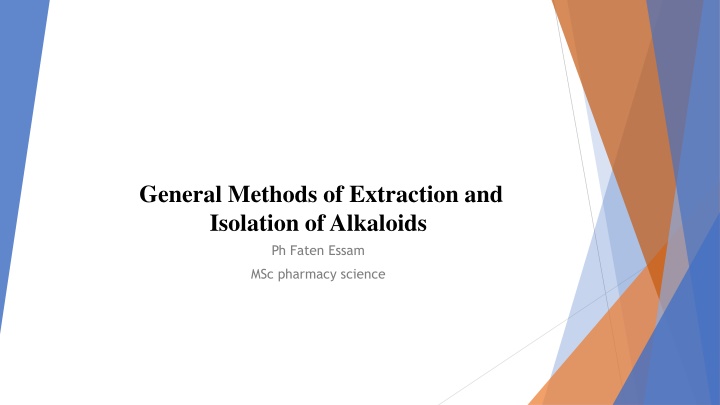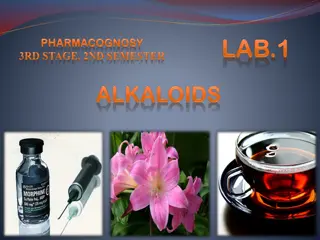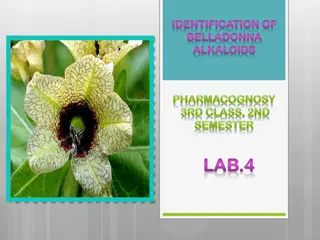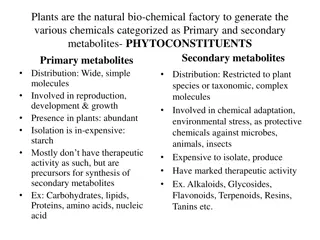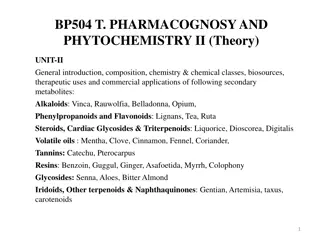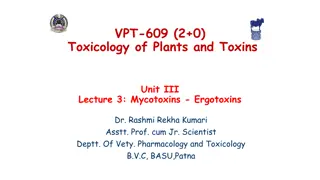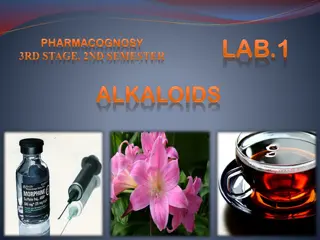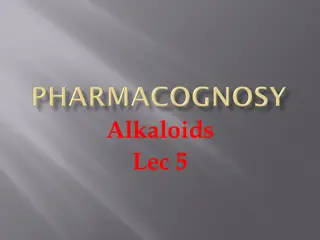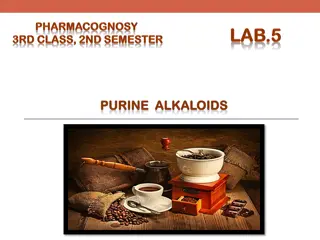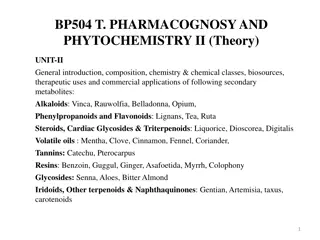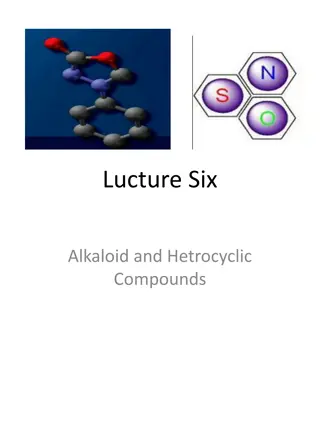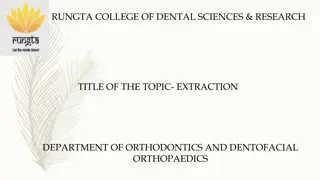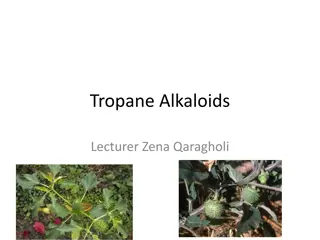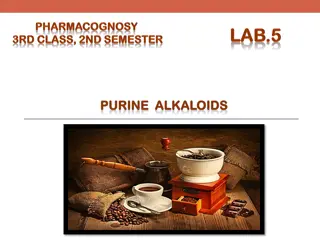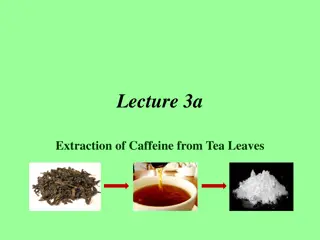General Methods of Extraction and Isolation of Alkaloids
Alkaloids, a group of nitrogen-containing organic compounds, play various roles in plants. Learn about their functions, forms, solubility, and exceptions. Explore the process of extraction and isolation methods for alkaloids. Discover how alkaloids interact with acids and alkalis.
Download Presentation

Please find below an Image/Link to download the presentation.
The content on the website is provided AS IS for your information and personal use only. It may not be sold, licensed, or shared on other websites without obtaining consent from the author.If you encounter any issues during the download, it is possible that the publisher has removed the file from their server.
You are allowed to download the files provided on this website for personal or commercial use, subject to the condition that they are used lawfully. All files are the property of their respective owners.
The content on the website is provided AS IS for your information and personal use only. It may not be sold, licensed, or shared on other websites without obtaining consent from the author.
E N D
Presentation Transcript
General Methods of Extraction and Isolation of Alkaloids Ph Faten Essam MSc pharmacy science
Alkaloids Alkaloids are large group of basic organic compounds containing one or more nitrogen atom usually in a hetero cyclic ring, most of them have a marked physiological action on human beings or animals The general structure is R-N.
Functions of alkaloids in plants 1. They may act as protective against insects and herbivores due to their bitterness and toxicity. 2. They are, in certain cases, the final products of detoxification therefore considered as waste products of metabolism. 3. They may provide nitrogen to the plant in case of nitrogen deficiency (source of nitrogen). 4. They, sometimes, act as growth regulators in certain metabolic systems. 5. They may be utilized as a source of energy
Forms of Alkaloids Alkaloids present In plant as : Free base Salts Glycosidal form like Solanine in Solanum
Solubility of alkaloids Both alkaloidal bases and their salts are soluble in alcohol. Solubility of free base alkaloids Generally, the bases are soluble in organic solvents and insoluble in water
Exceptions: Bases soluble in water: caffeine, ephedrine, codeine, colchicine, pilocarpine and quaternary ammonium bases. Bases insoluble or sparingly soluble in certain organic solvents: morphine in ether, theobromine and theophylline in benzene.
Solubility of salts Salts are usually soluble in water and, insoluble or sparingly soluble in organic solvents Exceptions: Salts insoluble in water: quinine mono sulphate. Salts soluble in organic solvents: lobeline and ap-oatropine hydrochlorides are soluble in chloroform.
Notes Alkaloids occurs in plants, usually in mixtures of related compounds such as tannins, proteins, fats, resins, and pigments, which generally hinder their isolation. Alkaloids react with acids to from salts. Alkalis liberate most alkaloids from their salts e.g .NH3. The use of strong alkali is not recommended incase of fatty drugs (e.g .seeds), to avoid saponification, which results in strong emulsions during extraction. Ammonia is one of the choicest alkali as it is sufficiently basic to liberate most alkaloids, as well as, volatile and completely removed after extraction
Extraction of alkaloids The extraction by fractional extraction (From less Polar to more Polar). 1-Defeating by non-polar solvent (Petroleum Ether, benzene, hexane, .) To get rid of Chlorophyll, Wax, Volatile oil, Fixed oil. 2-Filtration, for marc use methanol or ethanol 95% Evaporate by rotary evaporator (to Concentrate). 3-Add Tartaric acid 2% and Ethyl acetate will separate into two layers
Organic layer (For week or neutral alkaloids) -Aqueous layer (acidic layer, Tartaric acid) which have alkaloidal salt. To break the salt, add NH3 or Sodium bicarbonate. then add ethyl acetate again so will it separate into two layers again: - Aqueous layer (Quaternary alkaloids 4 ) - Organic layer (For basic alkaloid 1o,2 ,3 ).
Detection of alkaloid Wagner's test: Reddish brown precipitate. Mayer s: (HgCl2 Creamy precipitate with True alkaloid). Dragendroff: (Potassium Bismuth Iodide) Reddish Brown precipitate Hagger's test: (Picric acid) Yellow precipitate with True alkaloid. Tannic acid solution: different alkaloid colored precipitate.
A : Wagner's test B: Meyer s test C: Dragendroff's test
